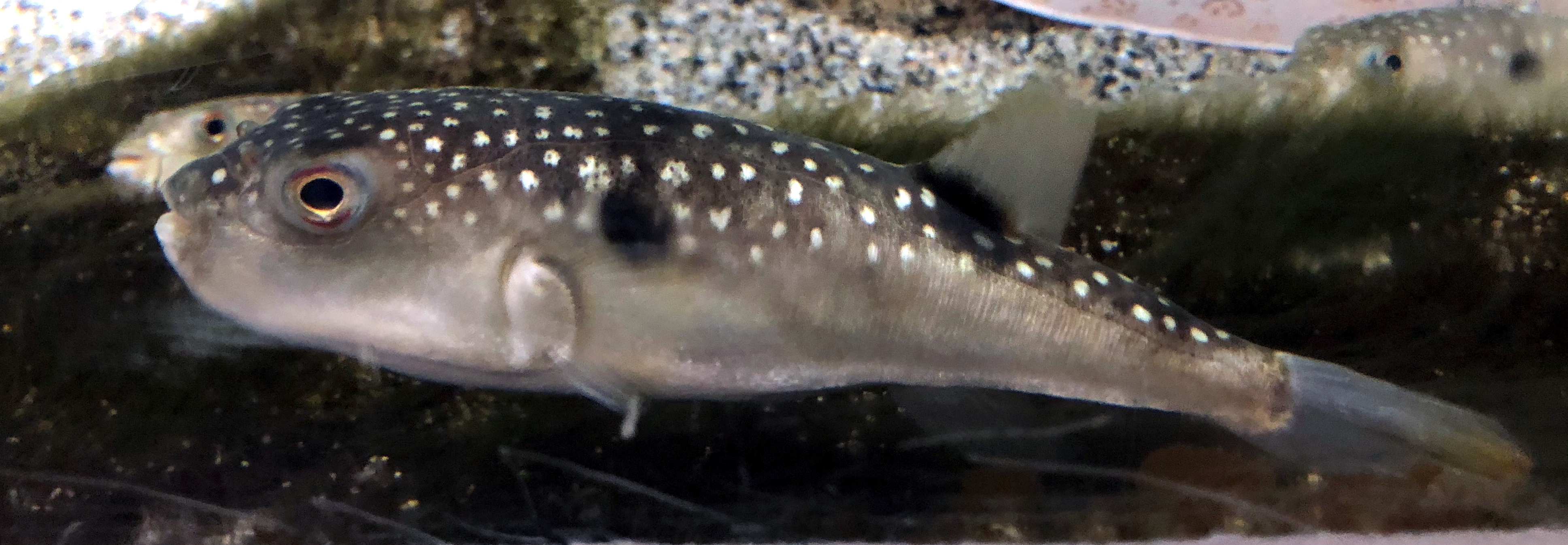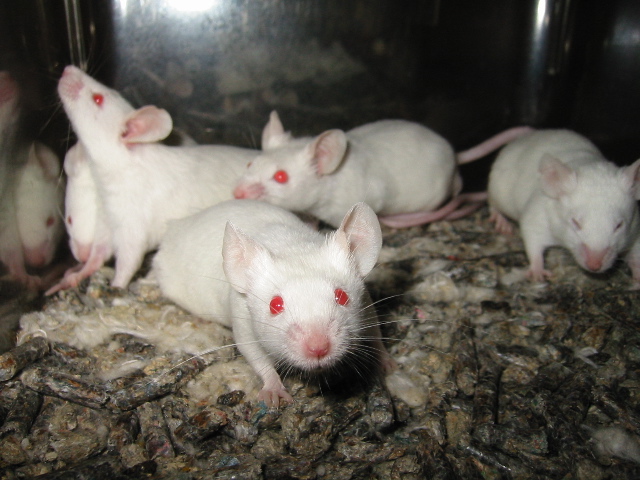|
Takifugu
''Takifugu'', also known by the Japanese name , is a genus of pufferfish with 25 species, most of which are native to salt and brackish waters of the northwest Pacific, but a few species are found in freshwater in Asia or more widely in the Indo-Pacific region. Their diet consists mostly of algae, molluscs, invertebrates and sometimes crustaceans. The fish contains lethal amounts of the poison tetrodotoxin in the internal organs, especially the liver and the ovaries, but also in the skin and the testes. The poison paralyzes the muscles while the victim stays fully conscious, and eventually dies from asphyxiation. There is currently no antidote, and the standard medical approach is to try to support the respiratory and circulatory system until the effect of the poison wears off. Distribution and conservation status There are 25 species belonging to the genus ''Takifugu''. Most species are restricted to salt and brackish waters of the northwest Pacific, but a few occur more wid ... [...More Info...] [...Related Items...] OR: [Wikipedia] [Google] [Baidu] |
Takifugu Obscurus
''Takifugu obscurus''Eschmeyer, W.N. (ed.) (1998) Catalog of fishes., Special Publication, California Academy of Sciences, San Francisco. 3 vols. 2905 p. or the obscure pufferfish is a species of euryhaline, Fish migration, anadromous Tetraodontidae, pufferfish first described by Tokiharu Abe, T. Abe in 1949. It has been categorized by the IUCN as a least-concern species globally since 2014; in South Korea, it is however classified as an endangered species due to overfishing of its endemic species, endemic populations.Doopedi/ref> The Catalogue of Life lists no subspecies of ''Takifugu obscurus''. The species prefers deeper, clearer areas of brackish water, brackish and freshwater, fresh water, and is found in Estuary, estuaries, as well as rivers and Tributary, tributaries thereof such as the South Korean rivers Geum River, Geum, Han River (Korea), Han, and Imjin river, Imjin, or the Tamsui River. The species is endemic to North Korea, North and South Korea, the Sea of Japan, and ... [...More Info...] [...Related Items...] OR: [Wikipedia] [Google] [Baidu] |
Takifugu Rubripes
''Takifugu rubripes'', commonly known as the Japanese puffer, Japanese pufferfish, Tiger puffer, or torafugu (), is a pufferfish in the genus '' Takifugu''. It is distinguished by a very small genome that has been fully sequenced because of its use as a model species and is in widespread use as a reference in genomics. Taxonomy and etymology The species is often referred to in the genomics literature as ''Fugu rubripes''. The genus ''Fugu'' is a synonym of the currently preferred '' Takifugu''. ''Takifugu'' is Japanese for puffer and ''rubripes'' comes from the Latin ''ruber'' and ''pēs'' meaning ruddy foot. Distribution and habitat The species is known from the Sea of Japan, East China Sea and Yellow Sea north to southern Sakhalin, at depths of . It is a demersal species. Spawning occurs in estuaries; young fish can tolerate a wide range of salinities and will remain in river mouths and lagoons, maturing for one year before migrating permanently to the open ocean. Genome ... [...More Info...] [...Related Items...] OR: [Wikipedia] [Google] [Baidu] |
Takifugu Plagiocellatus
''Takifugu plagiocellatus'' is a species of pufferfish in the genus ''Takifugu''. It is endemic to the coastal waters of southeastern Hainan. Description and habitat It was discovered in 2002 in Xincun, Hainan from four specimens. It is a demersal species that reaches 11 cm (4.3 inches). It is capable of inflating its abdomens with water when frightened or disturbed and are capable of producing and accumulating toxins such as tetrodotoxin and saxitoxin in the skin, gonads, and liver like other species of pufferfish. The oblique striped pufferfish is found in shallow coastal waters that have coral reefs or seagrass. Threats The species is endangered due to over-fishing, environmental degradation Environment most often refers to: __NOTOC__ * Natural environment, referring respectively to all living and non-living things occurring naturally and the physical and biological factors along with their chemical interactions that affect an organism ... such as pollution, and the ne ... [...More Info...] [...Related Items...] OR: [Wikipedia] [Google] [Baidu] |
Takifugu Ocellatus
''Takifugu ocellatus'', sometimes known as the ocellated puffer or the orange-saddle puffer, is a species of anadromous pufferfish in the family Tetraodontidae. It is native to China and Vietnam Vietnam, officially the Socialist Republic of Vietnam (SRV), is a country at the eastern edge of mainland Southeast Asia, with an area of about and a population of over 100 million, making it the world's List of countries and depende .... Juveniles of the species occur in brackish and freshwater environments, but adults are marine. This species is noted to be fatally poisonous to humans if consumed. It reaches 15 cm (5.9 inches) in total length. References ocellatus Fish described in 1758 {{Tetraodontiformes-stub ... [...More Info...] [...Related Items...] OR: [Wikipedia] [Google] [Baidu] |
Takifugu Chinensis
''Takifugu chinensis'', the Chinese puffer, is a species of fish in the family Tetraodontidae (pufferfish) that is found in coastal waters of China, Japan and Korea. This critically endangered pufferfish has drastically declined because of overfishing and habitat loss, but it is possibly also threatened by the widespread release/escape of aquacultured ''Takifugu rubripes'' within its range. These two species are similar, very closely related and perhaps should be considered conspecific, but they do differ in the colour of their anal fin Fins are moving appendages protruding from the body of fish that interact with water to generate thrust and help the fish swim. Apart from the tail or caudal fin, fish fins have no direct connection with the back bone and are supported o ...s. References Fish described in 1949 chinensis Taxa named by Tokiharu Abe {{Tetraodontiformes-stub ... [...More Info...] [...Related Items...] OR: [Wikipedia] [Google] [Baidu] |
Tetrodotoxin
Tetrodotoxin (TTX) is a potent neurotoxin. Its name derives from Tetraodontiformes, an Order (biology), order that includes Tetraodontidae, pufferfish, porcupinefish, ocean sunfish, and triggerfish; several of these species carry the toxin. Although tetrodotoxin was discovered in these fish, it is found in several other animals (e.g., in blue-ringed octopus, blue-ringed octopuses, Taricha, rough-skinned newts, and Naticidae, moon snails). It is also produced by certain infectious or symbiotic bacteria like ''Pseudoalteromonas tetraodonis, Pseudoalteromonas'', ''Pseudomonas'', and ''Vibrio'' as well as other species found in symbiotic relationships with animals and plants. Although it produces thousands of intoxications annually and several deaths, it has shown efficacy for the treatment of cancer-related pain in phase II and III clinical trials. Tetrodotoxin is a sodium channel blocker. It inhibits the firing of action potentials in neurons by binding to the voltage-gated sodiu ... [...More Info...] [...Related Items...] OR: [Wikipedia] [Google] [Baidu] |
Tokiharu Abe
was a Japanese ichthyologist and a government official of Ministry of Agriculture and Forestry. Career Tokiharu Abe was born in Tabata, Tokyo, emigrated to Taiwan with his family in 1919, graduated from Taipei High School and was admitted to Tokyo Imperial University.he taxonomic study on the family fish of Takifugu of the sea around Japan�� in 1952. He became senior researcher at Tokai Regional Fisheries Research Institute and retired in 1977. He worked for the University Museum of the University of Tokyo. He became the superintendent of Osakana Fukyu Sentā Shiryōkan (Tsukiji Fish Information Center and Museum).Osakana Fukyu Sentā Shiryōkan (Tsukiji Fish Information Center and Museum) / Central Wholesale Market Abe beca ... [...More Info...] [...Related Items...] OR: [Wikipedia] [Google] [Baidu] |
Tetraodontidae
Tetraodontidae is a family of marine and freshwater fish in the order Tetraodontiformes. The family includes many familiar species variously called pufferfish, puffers, balloonfish, blowfish, blowers, blowies, bubblefish, globefish, swellfish, toadfish, toadies, toadle, honey toads, sugar toads, and sea squab. They are morphologically similar to the closely related porcupinefish, which have large external spines (unlike the thinner, hidden spines of the Tetraodontidae, which are only visible when the fish have puffed up). The majority of pufferfish species are toxic, with some among the most poisonous vertebrates in the world. In certain species, the internal organs, such as the liver, and sometimes the skin, contain mucus tetrodotoxin, and are highly toxic to most animals when eaten; nevertheless, the meat of some species is considered a delicacy in Japan (as 河豚, pronounced ''fugu''), Korea (as 복, ''bok'', or 복어, ''bogeo''), and China (as 河豚, ''hétún'') when ... [...More Info...] [...Related Items...] OR: [Wikipedia] [Google] [Baidu] |
Model Organism
A model organism is a non-human species that is extensively studied to understand particular biological phenomena, with the expectation that discoveries made in the model organism will provide insight into the workings of other organisms. Model organisms are widely used to research human disease when human experimentation would be unfeasible or unethical. This strategy is made possible by the common descent of all living organisms, and the conservation of metabolic and developmental pathways and genetic material over the course of evolution. Research using animal models has been central to most of the achievements of modern medicine. It has contributed most of the basic knowledge in fields such as human physiology and biochemistry, and has played significant roles in fields such as neuroscience and infectious disease. The results have included the near- eradication of polio and the development of organ transplantation, and have benefited both humans and animals. From 19 ... [...More Info...] [...Related Items...] OR: [Wikipedia] [Google] [Baidu] |
Algae
Algae ( , ; : alga ) is an informal term for any organisms of a large and diverse group of photosynthesis, photosynthetic organisms that are not plants, and includes species from multiple distinct clades. Such organisms range from unicellular microalgae, such as cyanobacteria, ''Chlorella'', and diatoms, to multicellular macroalgae such as kelp or brown algae which may grow up to in length. Most algae are aquatic organisms and lack many of the distinct cell and tissue types, such as stomata, xylem, and phloem that are found in embryophyte, land plants. The largest and most complex marine algae are called seaweeds. In contrast, the most complex freshwater forms are the Charophyta, a Division (taxonomy), division of green algae which includes, for example, ''Spirogyra'' and stoneworts. Algae that are carried passively by water are plankton, specifically phytoplankton. Algae constitute a Polyphyly, polyphyletic group because they do not include a common ancestor, and although Eu ... [...More Info...] [...Related Items...] OR: [Wikipedia] [Google] [Baidu] |
Euryhaline
Euryhaline organisms are able to adapt to a wide range of salinities. An example of a euryhaline fish is the short-finned molly, '' Poecilia sphenops'', which can live in fresh water, brackish water, or salt water. The green crab ('' Carcinus maenas'') is an example of a euryhaline invertebrate that can live in salt and brackish water. Euryhaline organisms are commonly found in habitats such as estuaries and tide pools where the salinity changes regularly. However, some organisms are euryhaline because their life cycle involves migration between freshwater and marine environments, as is the case with salmon and eels. The opposite of euryhaline organisms are stenohaline ones, which can only survive within a narrow range of salinities. Most freshwater organisms are stenohaline, and will die in seawater, and similarly most marine organisms are stenohaline, and cannot live in fresh water. Osmoregulation Osmoregulation is the active process by which an organism maintains its ... [...More Info...] [...Related Items...] OR: [Wikipedia] [Google] [Baidu] |
Salomon Müller
Salomon Müller (7 April 1804 – 29 December 1864) was a German natural history, naturalist. He was born in Heidelberg, and died in Freiburg im Breisgau. Müller was the son of a saddler in Heidelberg. Along with Heinrich Boie and Heinrich Christian Macklot, he was sent by Coenraad Jacob Temminck to collect specimens in the East Indies. Here, he worked as an assistant for the ''Natuurkundige Commissie'' (Commission for Natural Sciences), an organization that he eventually became a member of.Nationaal Herbarium Nederland (biography). Müller arrived in Jakarta, Batavia in 1826, then journeyed to New Guinea and Timor in 1828 aboard the ''Triton''. Beginning in October 1828, he remained at the port cit ... [...More Info...] [...Related Items...] OR: [Wikipedia] [Google] [Baidu] |


